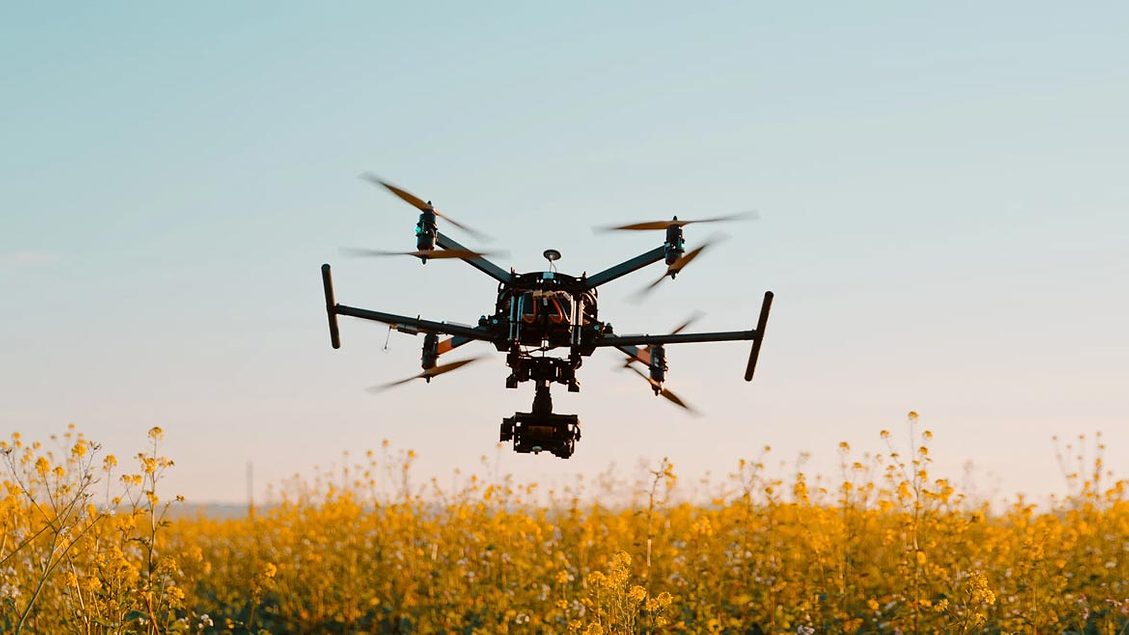Getting ahead of the new normal: Counter-drone security

Today, commercially available drones are being used as weapons.
Flying improvised explosive devices (IEDs) first emerged in the Iraq and Syrian conflicts around 2016. Terrorist organizations released videos of drones used for surveillance and reconnaissance as early as 2014.
It did not take long for sophisticated criminals and drug cartels to mirror those tactics of foreign terrorist groups. One cartel has created a drone unit for this specific task. The developments in the Ukraine conflict also underscore how impactful drones and counter-drone (C-UAS) deployments are changing in the face of modern warfare.
Drone use cases are a double-edged sword. The same drones that can spot remote forest fires and assist police and emergency responders in a variety of ways can be used to breach personal privacy, hack wireless networks and cause physical destruction. Therein lies a new level of risk.
The integration of leap-ahead technologies (microcomputer flight controllers, autopilots, GPS, onboard cameras, obstacle avoidance sensors, etc.) onto commercially marketed quadcopter drones revolutionized the industry, and popularity soared — along with new security risks.
Unauthorized drones force security leaders to think differently about security and red-team new risk scenarios. The threat gamut runs from public gatherings (sports or entertainment venues, for example) to critical infrastructures, mass transportation and everything in between.
Counter-drone measures in enterprise security
Imagine a traditional prison setting. Security must keep the inmates in and the drones out. Correctional facilities are being targeted with unauthorized drone deliveries of narcotics, cell phones, cash, etc. Handguns could certainly upset the balance of power considerably, not to mention create issues with guard staffing and hiring.
In this, or similar scenarios, how can security teams protect their organizations when this drone threat flies over the line of sight of installed camera systems and the heads of manned security guard personnel?
However, the threat scenario gets much more dire. The nightmare scenario has already been visualized: drone swarms. The aerial drone displays at the recent Olympic Games were truly amazing. Up to 1,800 individual drones illuminated in different colors and perfectly coordinated to create moving images. Now imagine a pound of C4 explosives on each drone and headed to a city near you.
Hostile drones pose a major threat and incidents are increasing globally at an alarming rate. While piloted drones will remain popular and useful, it is autonomous drones that will rule the day. If a serious adversary wants to do significant damage, they will not be piloting a drone to give away their location. If several bad actors want to launch autonomous drones simultaneously, location alerts will not be an effective deterrent.
C-UAS defenses must meet the changing threat landscape
Our drone defenses must evolve with the emerging threats. A counter uncrewed aerial system (C-UAS) solution must be sensor agnostic to scale with new threats and provide a straightforward integration with command & control (C2) systems. Data collection from multiple sensors, systems and software must be processed securely and define actions through artificial intelligence (AI) and machine learning (ML).
In standard C-UAS solutions, there are four types of monitoring equipment: radio frequency (RF) sensors, radar, optical sensors (cameras) and acoustic sensors (microphones).
RF sensors consist of one or multiple antennas of various ranges to detect communications between and drone and its controller (human operator). Some vendors have database libraries of drone manufacturers and flying objects, while others can provide MAC addresses if the drone is using Wi-Fi, (some do both), and advanced systems can triangulate sensors to determine the pilot location down to an accuracy within several feet. The major downside is RF sensors are useless against autonomous drones.
Radar uses radio waves to determine distance and speed of objects. It is accurate and identifies hundreds of targets simultaneously, including all drone types (piloted or autonomous) in many weather conditions. The downside is radar was designed for large objects and can generate a lot of false positives in detecting small drones.
Optical sensors (cameras) utilize multiple wavelengths (thermal, infrared, etc.) for day or night drone detection, and the technology is evolving quickly to extend range and intelligence with AI capabilities. The major benefit is in visually identifying a drone payload (explosives) at a distance. Issues would be performance in bad weather conditions and false positives.
Acoustic sensors can involve one or multiple microphones and software. These technologies can detect drones by engine sound to calculate distance and direction. Multiple sensors can be activated for triangulation. Acoustics can detect all types of drones but lack effectiveness in highly populated, noisy environments.
There are many other technologies to counter drones: Jammer guns, GPS spoofers, high power microwave (HPM) and electromagnetic pulse (EMP) devices, and even cyberattacks. All are restricted outside of a handful of government agencies.
Securing low altitude airspace is fast becoming a critical requirement. Understanding unauthorized drone threats and countermeasures is the new normal. Now is the time to get ahead of the airborne threat.

